The Re-Emergence of Ayni through the Construction of Storehouses for Animal Feed
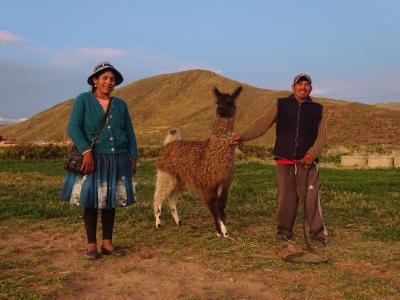
By Damián Andrada | ORE-IWGIA researcher, master’s in political science and sociology
Thanks to the Indigenous Navigator project and the Centre for Legal Studies and Social Research (CEJIS), the native peoples of the Jach'a Marka Tapacarí Cóndor Apacheta Indigenous Territory received funding from the European Commission and have built 55 storehouses for their cattle fodder. This means they will now have both the quality and quantity of supplies needed to feed their animals and produce milk and cheese. The project also includes the recovery of the Quechua language and training in indigenous and collective rights.
Land of carnivals and mining, the dryness and altitude of Oruro stand in stark contrast to the warmth of its people. The Jach'a Marka Tapacarí Cóndor Apacheta Indigenous Territory is situated two hours from the regional airport. Along the sides of the road that links Oruro and Peñas, swirls of dust play in the shadow of the looming mountains. “Tapacarí is a canyon. Look at the hills on both sides. That’s why such a wind gets up,” explains one of the passengers.
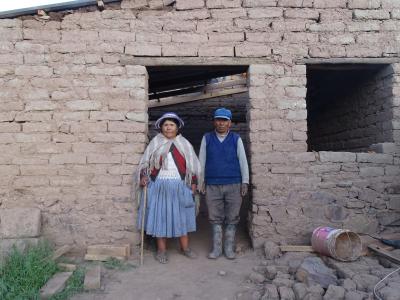
It is 17 December and the community is celebrating the construction of 55 fodder storehouses: 45 form part of the Indigenous Navigator Project and 10 were provided by the municipal authorities. One hundred highland residents from the local area are meeting to celebrate the completion of the work. These storehouses are essential infrastructure for these farming communities. The people are happy that the two-year project has been successfully concluded and, one by one, they speak up to give thanks and congratulate the beneficiaries. The distinctive head dresses and green ponchos of the native authorities are notable in the front row. A journalist from Radio Peñas, Fermín Cepeda, is making sure the event runs smoothly.
- I would like to warmly welcome you all. We authorities are very happy with the roofs that have arrived. Long live Tapacarí! – says Jatun Tata (Mayor, in Quechua) Luis Quispe, opening the event.
- This was not an easy project to implement. But we showed we had the capacity and this project has brought us together, from north to south. We are all gathered here in the community centre: brothers from Antequera and Pazña. We are united, as brothers, as a single people. A single territory. We have discovered our own identity and our own rights, which we are all too often unaware of. The Indigenous Navigator showed us how we were losing our language, Quechua. We need to give renewed value to our language and our culture – adds the Mayor of Pazña, Diony Achacollo.
The words of their leaders do not fall on deaf ears. There are two municipalities in Tapacarí: Pazña and Antequera, in just one territory. The result of this was an age-old division between the two municipalities that this project has managed to overcome. Pazña and Antequera worked together as a community. They came together in communal tasks such as food preparation, storehouse construction and celebrations of the project’s progress. This has led the beneficiaries to consider bringing back “ayni”, their ancestral practice of Andean solidarity by which community members help each other.
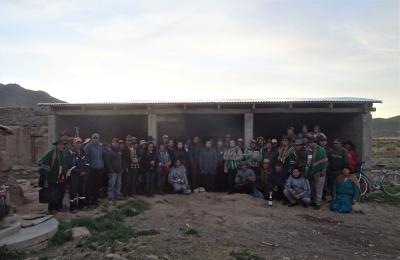
This is what the celebrations are all about. Two years ago a survey of more than 100 questions was conducted by the community itself. The information gathered was uploaded into the Indigenous Navigator portal and the International Work Group for Indigenous Affairs (IWGIA) validated it. The project is thus in line with the 2030 Agenda recommendations and the UN Declaration on the Rights of Indigenous Peoples with regard to issues such as the right to health, education, prior consultation and democratic freedoms.
The results of the survey was subsequently discussed at an assembly in order to consider which of the needs could be resolved. As Tapacarí is a farming region that produces meat, milk and cheese, the communities noted that their cattle feed tends to get ruined during the winter or when it rains. They therefore concluded that they needed storage space in which to protect the fodder and keep it at a quality fit to feed to the cattle. The second problem that emerged was education, because the young people are losing the Quechua language. The assembly thus approved the construction of spaces in which to store food, made using local materials and ancestral knowledge, together with the recovery of the Quechua language through workshops.
- This project is not simply focused on infrastructure; it is more comprehensive than that. Training has also been provided in their rights, in community development and in the 2030 Agenda. The native peoples have been able to recover their ancestral techniques for storehouse construction. They themselves brought the stone and made the adobe for the walls. By keeping the cattle feed fresh and in a good state, they will be able to produce milk and cheese for their families. The contribution made by the community must be emphasised and appreciated. The community also helped many people living on their own to able to contribute too – notes the CEJIS sociologist, Ángela Agreda.
The fact that the Indigenous Navigator project was supporting the construction of 45 storehouses also led to the local council contributing 10 more. The commitment shown by the community members further managed to increase the initial size of the storehouses. Although each storehouse is valued at around 3,107 Bolivianos (USD 445), the actual investment has been far greater given the economic contribution of the community itself, in addition to the project investment.
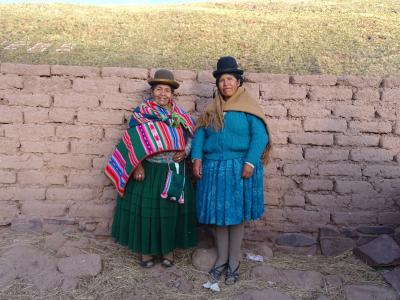
Vitalia Martínez Arroyo is one of the project’s beneficiaries and, together with her mother, she is celebrating the inauguration of the storehouses. She notes that the project has been “extremely important” because she is a direct beneficiary and she clarifies that this project was not imposed from outside but came out of a decision taken by the municipality itself through consultation and an assembly. Although women tend to focus on the milking, Vitalia adds that they also helped in the construction by bringing buckets of water, transporting mud in wheelbarrows, making adobe and generally supporting their husbands.
- We know what our needs are and we decided that the storehouse project should be a priority. Projects are often imposed on us from outside and then they do not have the expected results. All the beneficiaries are very satisfied with this project because we are milk producers and this problem was making us fed up. We realised that fodder held in a storehouse stays green and does not lose its properties. When it was kept outside, the wind used to take it, the rain spoilt it, it fermented and was not good for the cattle. Now we will be able to increase the amount of milk we obtain because of the quality of the feed – comments Vitalia.
After the celebrations are over, Mario Cruz Onofre and Elsa Fernández Llanque get on with completing their storehouse. Elsa says they will be finished by the next day and notes that they have used ancestral techniques based on stone and adobe.
- We built the walls with stone and mud, and then we put the roof on. Now we are deciding where each foodstuff should go: bean straw and quinoa here; barley (cebada de versa) at the back; almacigo (copperwood/gumbo-limbo) over there – explains Don Mario.

To celebrate the project’s completion, the community members conduct a ch'alla (ceremony of reciprocity with Pachamama, according to the Aymara tradition) for one of the storehouses. It is Gumercindo Quispe Sequeiros’ storehouse that is chosen, at the entrance to Peñas. The authorities fill decorated pots with cider and then smash them on the ground crying “Jallalla!” (“Long may it live” in Aymara).
- I am proud to have a good storehouse in which to store cattle feed. Before, what I had was much smaller than this. No we won’t have to make the cattle walk so far, as this damages their feet and reduces their milk. The more feed we can store, the more milk they will give. Milk production will improve to 20 or 25 litres. I learned the ancestral practices from my grandfather, I worked a yoke for 10 years, I learned to make adobe from my grandparents and my dad. I don’t have to hire builders now; I can do it myself. Just me and a plumb line. It only took a week to build: when you set your mind to something, you just get on with it. In fact, I enjoyed it – comments Gumercindo, his wife at his side.
In line with the 17 goals of the 2030 Agenda, the long-term aim of this project is to eradicate poverty and put an end to hunger in Jach'a Marka Tapacarí Cóndor Apacheta by improving food security and thus ensuring a better future for families living in this territory.
Slowly, the people begin to return to their homes. The beneficiaries are happy with their storehouses, built using ancestral techniques, as they will improve the feed given to their cattle. They are also happy that they have begun the recovery of their Quechua language. They know what was most important in all of this, however: no-one forced them to do anything, they took the decision regarding projects themselves and Pazña and Antequera came together to work using the age-old practice of ayni.
The project is funded by European Commission - Development & Cooperation - EuropeAid, channelled by International Work Group for Indigenous Affairs (IWGIA), executed by Centro de Estudios Jurídicos e Investigación Social - CEJIS, through #CICOL under the Indigenous Navigator Initiative.
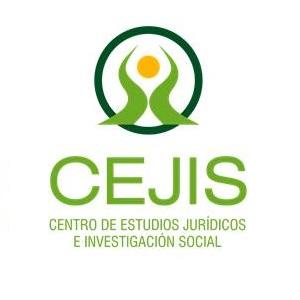
El Centro de Estudios Jurídicos e Investigación Social (CEJIS)
